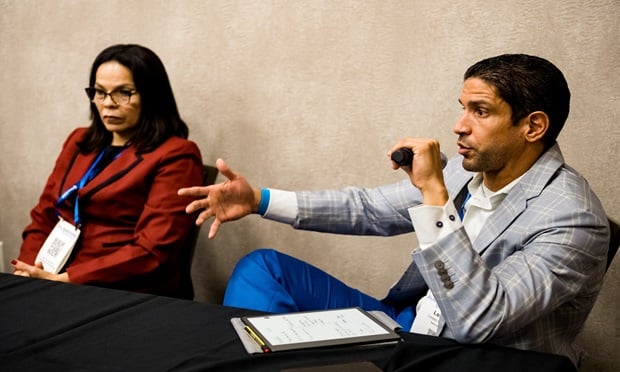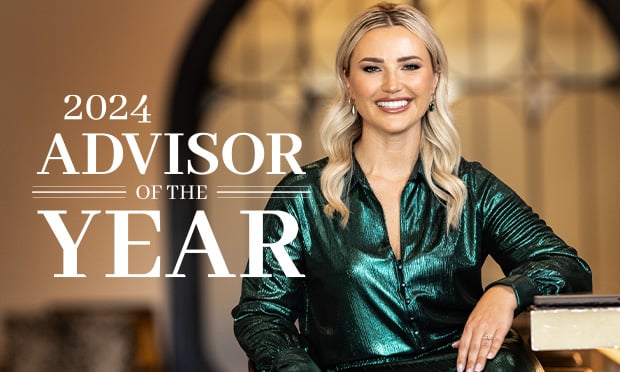Among the most widespread technological developments in recentyears is the emergence of social media as primary conduits ofcommunication, both business and personal.
|In fact, the intermingling of communications modes betweenpersonal and business needs has helped make participation inFacebook, LinkedIn, Twitter, YouTube and other social-mediaplatforms almost mandatory among those who desire to remain fullyinformed during the breakneck-speed development of thistechnological age.
|The modern communications phenomena seem to touch every elementof 21st-century life – including entertainment options,retail-bargain opportunities, the latest in political developments,travel suggestions, sports action, unique food recipes, restaurantreviews, home-improvement ideas and, yes, health care benefits.
|Contemplating what new ideas should be included among hisfinancial/retirement product line’s social-media selections, KrisGates – assistant vice president of participant and interactivemarketing at MassMutual Retirement Services – is convinced thesocial-media trend has only begun to scratch the surface ofproductive possibilities.
|Through social media, Gates’ team communicates daily with peoplewho, through their employers (“plan sponsors,” to the planprovider), are members of MassMutual’s Retirement Servicesfamily.
|“As the Gen-Y’s and Millenniums and whoever after that come intothe work force, their expectation is going to be that we providethem a medium to communicate with us the way they prefer to – notthe way we prefer them to,” Gates said. “I tell our group allthe time: If you don’t provide them the avenue to conductbusiness with you that they prefer, they’ll go to somebodyelse.
|“We can’t just rely on the website, or printedstatements. It has to be across all mediums – becauseeveryone’s different in the way they want to interact.”
|A fundamental caution when participating in the world of socialmedia is not to harbor unrealistic expectations – but also not tounderestimate the potential to deliver highly desirable andextremely valuable information.
|“Social media is not the forum from which to push your product,”said Gates. “It’s more of a ‘service’ – people will followyou, and engage with you, if they think they’re getting valuableinformation out of it.
||“And this goes into our overarching communicationstrategy: We think there are two types of employees workingfor our plan sponsors. There are the employees who need someconvincing that their retirement plan is where they should investtheir money for a better chance at retirement success.
|“Then there’s a growing population – especially in theyounger-age market – who know they should be saving, but theirissue is that they cannot, because they don’t have enough income,or they have expenses that are too high.”
|All these circumstances provide further grist as to preciselywhat information – and in what format – people will most appreciatereceiving through social media.
|“You can find a lot of experts in social media,” saidGates. “But social media as it pertains to an employee benefitor, in this case, a retirement plan, there’s really not a body ofwork there. In fact, as near as I can tell, we are one of justtwo companies that have a social-media page specific to retirementproducts. Everyone else just has an enterprise-level pagewhere they do all their products.
|“We decided to put our toe in the water, and build up someknowledge and learnings along the way as we refine and get better –and eventually have a better social-media product than everyoneelse’s, because we got in earlier.”
|Again, there’s a developing realization that, in particular,younger people are choosing very strongly to communicate on theirown terms.They want to use communication tools of their choice, andthey want information delivered in specific ways.
|“Two things we’ve learned while talking to people abouteducation in their finances,” Gates said. “One is that they wouldrather hear from someone their own age, rather than – in the caseof younger employees – someone who is much older kind of coming offas a parental lecture.
|“And the second is that when given the opportunity to go tosomeone for help, almost all the time these folks pick anindependent third party – a friend, a family member, their coworker– because it’s obviously not true, but there’s the sentiment thatMassMutual, or any investment manager or provider, has an‘agenda.’ And are we a credible source for help?
|“So for that reason, we’re using industry experts in our socialmedia to tell the same story.”
|The result is an evolving social-media strategy, and continuallyaccumulating knowledge tweaks the ongoing effort.
|“It’s very important that we know who we are,” Gates said.“We’re a retirement provider who’s offering a service for peoplewho are interested in saving for retirement.
|“And although I think that’s important to 100 percent of thepeople in the country, it may not be interesting to 100percent. So we don’t expect to get millions of peoplefollowing us. But those who do, we expect to be interested andengaged with the tips they might find – or some of the ideas, oreducational things we offer.”
Complete your profile to continue reading and get FREE access to BenefitsPRO, part of your ALM digital membership.
Your access to unlimited BenefitsPRO content isn’t changing.
Once you are an ALM digital member, you’ll receive:
- Critical BenefitsPRO information including cutting edge post-reform success strategies, access to educational webcasts and videos, resources from industry leaders, and informative Newsletters.
- Exclusive discounts on ALM, BenefitsPRO magazine and BenefitsPRO.com events
- Access to other award-winning ALM websites including ThinkAdvisor.com and Law.com
Already have an account? Sign In
© 2024 ALM Global, LLC, All Rights Reserved. Request academic re-use from www.copyright.com. All other uses, submit a request to [email protected]. For more information visit Asset & Logo Licensing.








